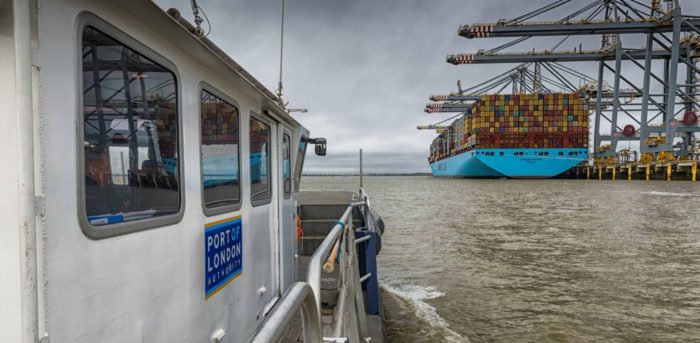Trade through the Port of London reached 53.2 million tonnes during 2018, an amount that was last seen more than ten years ago. This increase was mainly due to strong rise in containerised cargoes, especially at the newest container terminal on the river, DP World London Gateway, which attracted several new services.
Specifically, container trades drove the growth, with an increase of 3.4 million tonnes, reaching 20 million tonnes for the first time. This was especially visible at DP World London Gateway, with volume increasing 35%, which was partly due to the port winning scheduled services from Asia and the Mediterranean. In addition, unitised cargo throughputs also grew at the Port of Tilbury and Cobelfret.
[smlsubform prepend=”GET THE SAFETY4SEA IN YOUR INBOX!” showname=false emailtxt=”” emailholder=”Enter your email address” showsubmit=true submittxt=”Submit” jsthanks=false thankyou=”Thank you for subscribing to our mailing list”]
Regarding oil products and gases, they rose by 500,000 tonnes to 14.1 million tonnes, because new and upgraded facilities came on stream, such as at OIKOS on Canvey Island. Namely, OIKOS’s £65 million investment is in the third phase of a major construction and development programme at its bulk liquid storage terminal on Canvey Island, which includes the construction of an additional 12 storage tanks, a new jetty and new road loading racks.
Moreover, redevelopment of roll-on/roll-off freight operator, Cobelfret’s, jetties at Purfleet was completed during 2018, under an investment which saw bigger ships deployed on their routes to the Netherlands and Belgium.
Additionally, investment by building materials operators included Hanson completing the first phase of a £4.3 million upgrade at its Dagenham aggregates depot and wharf. Works are taking place at CEMEX Northfleet, where the discharge system is being replaced in a PLA Investment Plan funded initiative. The Brett Group is also developing a new concrete batching plant at Peruvian Wharf, which is a protected wharf in London bought by the PLA in 2016, which will be reactivated in the course of 2019.
Overall, trade for 2018 increased about 10%, PLA chief executive, Robin Mortimer, informed.
Now, the Port of London says that the long-term growth in the port will be ensured via further development at Gateway and investment in major new projects. In fact, Forth Ports have already received development consent for its new £200 million port terminal, Tilbury2. P&O Ferries is the main customer for the new Ro-Ro facility, while the rest of the site will be dedicated to UK’s largest construction processing hub.
Traditionally terminals on the Thames have been the route for supplying the country’s major centre of population with life’s essentials: food, fuel and much more. This has never been truer than today and is at the heart of growth forecasts trade in the Thames Vision, which see forecast cargoes on the river rising to as much as 80 million tonnes by 2035
Robin Mortimer stated.






























































